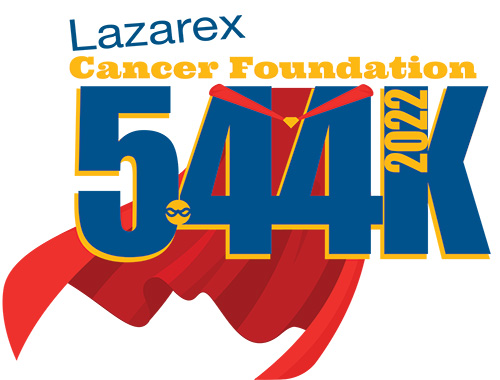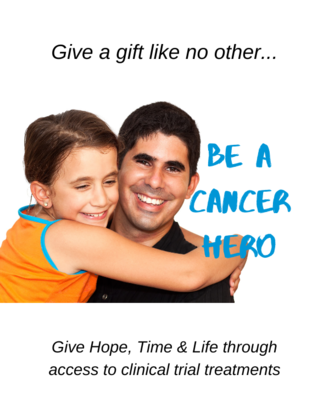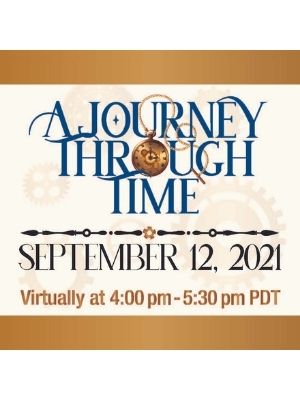by Dana Dornsife, CEO and Founder, Lazarex Cancer Foundation
March 26, 2020
WORKSTREAM: “The organized output of several distinct and often unrelated work groups”
Development of the IDEA Model: A Workstream for Transformational Change
I Identify Challenge
D Develop Plan
E Execute
A Assess
This is the exact model that we, at Lazarex Cancer Foundation, have formulated and are following for our IMPACT and Community IMPACT efforts. We began with identifying the challenges around cancer clinical trial enrollment, retention, diverse participation, and equitable access to cancer clinical trials. We identified the key stakeholders and considered each of their unique perspectives on the challenges. We then uncovered the key issues as to why these challenges exist amongst those stakeholders and developed plans to sustainably address them. We are currently in the process of executing those plans and will assess the results when we conclude our efforts. For Lazarex we have (3) concurrent workstreams – CARE, IMPACT and Community IMPACT – unifying often unrelated stakeholders or work groups for organized output to create sustainable change.
The four steps outlined in the IDEA Model must be fully executed, preferably in order (though there may be crossover between steps) to generate a sustainable outcome. The steps may be re-visited during the process to incorporate real time discovery and learning that may influence outcome – in other words – mid-course corrections. The most challenging aspect of this model is the execution step creating an “interdependent” or open process amongst stakeholders that are typically “intradependent” or closed and often proprietary.
From my perspective, the E step is where good ideas meet their demise because it requires revolutionary action to create evolutionary change. This is the hard part – converting talk and observations into an actionable plan with the cooperation of key identified stakeholders. Historically, identified stakeholders have adopted practices that support their unique activities to their individual advantage, often overlooking the concept of unified action for the greater good. This aspect of operating in a capitalistic society – the value of which currently falls under much scrutiny – is NOT a focus for this narrative. This narrative focuses on how we can harness positive outcomes from the COVID-19 challenges, as stakeholders have been instantly and situationally unified by a virus, bypassing the traditional focus on individual outcomes for the greater good of society as a whole.
So, what does this mean for Lazarex and the cancer community we support?
Identify the Challenge: Can Our COVID-19 Experience with Disrupting the Conventional Flow of Medical Care (Benefit) (Transform) (Yield) Create a “New Normal” for the Cancer Clinical Trial Landscape?
Today’s Current Situation: In order to contain the spread of COVID-19 and accommodate the anticipated and unprecedented rise of patients who are or will be in need of critical care, the medical community has been forced to re-evaluate the conventional approach to administering care; re-purposing spaces, (re-directing) medical expertise, (re-organizing) available resources, and re-structuring the approach to patient care. Medical institutions have classified patient visits into several categories:
Non-essential – visits that can be DEFERRED until the threat of COVID-19 dissipates without bringing harm to the patient.
Essential In-Person – visits that must be DONE IN-PERSON to administer critical care and treatments that will MEANINGFULLY improve health outcomes, alleviate adverse symptoms, prevent progressive disease and safeguard survival.
Essential Remote – visits that can be done remotely via telemedicine technology platforms like Skype, Zoom, FaceTime, wearables with monitoring apps, and telephone for instance, that provide proper medical attention and supervision while minimizing a patient’s exposure to COVID-19.
This approach trickles down to separating those aspects of a pre-COVID-19 historical “routine visit” for care or treatment into Essential In-Person and Remote visits to further minimize patient exposure and has the added benefit of increasing the amount of time medical professionals can devote to COVID-19 efforts.
Potential for Change Tomorrow: For many years there has been discussion amongst clinical trial stakeholders regarding the benefits of de-centralizing efforts around the facilitation of clinical trials and even doing virtual trials. This concept is particularly relevant in the realm of cancer clinical trials and most importantly for the cancer patients that participate in them. As advances are made in cancer research and development, the complexity of therapeutic cancer clinical trials increases correspondingly at the institutional and investigator levels. This complexity, and the trend toward capturing broader patient data and information, and increasing scientific rigor, has created additional, and in some instances unbearable, burden on the cancer patients who participate.
The concepts of de-centralized and virtual cancer clinical trials offer many benefits; cost reduction, increase in medical personnel band-width and maximization of their core competencies, but the greatest benefit would be the reduced burden of participation for cancer patients who are already burdened with the disease. The COVID-19 experience is bringing us closer to transforming these concepts into a reality. Medical institutions have been forced to re-evaluate how care is administered and due to the need to minimize exposure to COVID-19, especially for cancer patients who are already immune-compromised, they are creating and adopting the very processes that successful implementation of de-centralized and virtual cancer clinical trials require. COVID-19 has forced our hand and we have had to by-pass the ideal process, skip the Identify and Development Steps of the IDEA model and jump into the Execute step. We also have the added benefit of stakeholder unity in a time of crisis to get the job done – in this case revolutionary action for revolutionary change.
When the dust settles and we have recovered from the COVID-19 crisis, we will be able to assess the impact of the changes to the process of cancer patient visits for treatment and clinical trial participation. This is particularly relevant for patients in rural areas with limited access to cancer resources, the medically underserved, and communities of color as they are disproportionately affected by poverty. In the rear view mirror, we may discover that the COVID-19 response was an unintended catalyst for change for future cancer clinical trial protocol development and, most importantly, reduction of the burden of participation for cancer patients, allowing us to increase enrollment, improve diversity and create a platform of equitable access for ALL cancer patients.
Resources:
The Cancer Letter: https://cancerletter.com/articles/20200320_1/
Notes:
Using telemedicine for routine health monitoring and check-ins, diagnostics locally. Blood draws locally. Clinical trial consent and surveys by phone or by using a technology platform like Zoom or Skype
Remote assessment of adverse reactions for determination of severity and recommended action: come in for an essential visit or other steps that should be taken and avoid unnecessary trips to the hospital.




